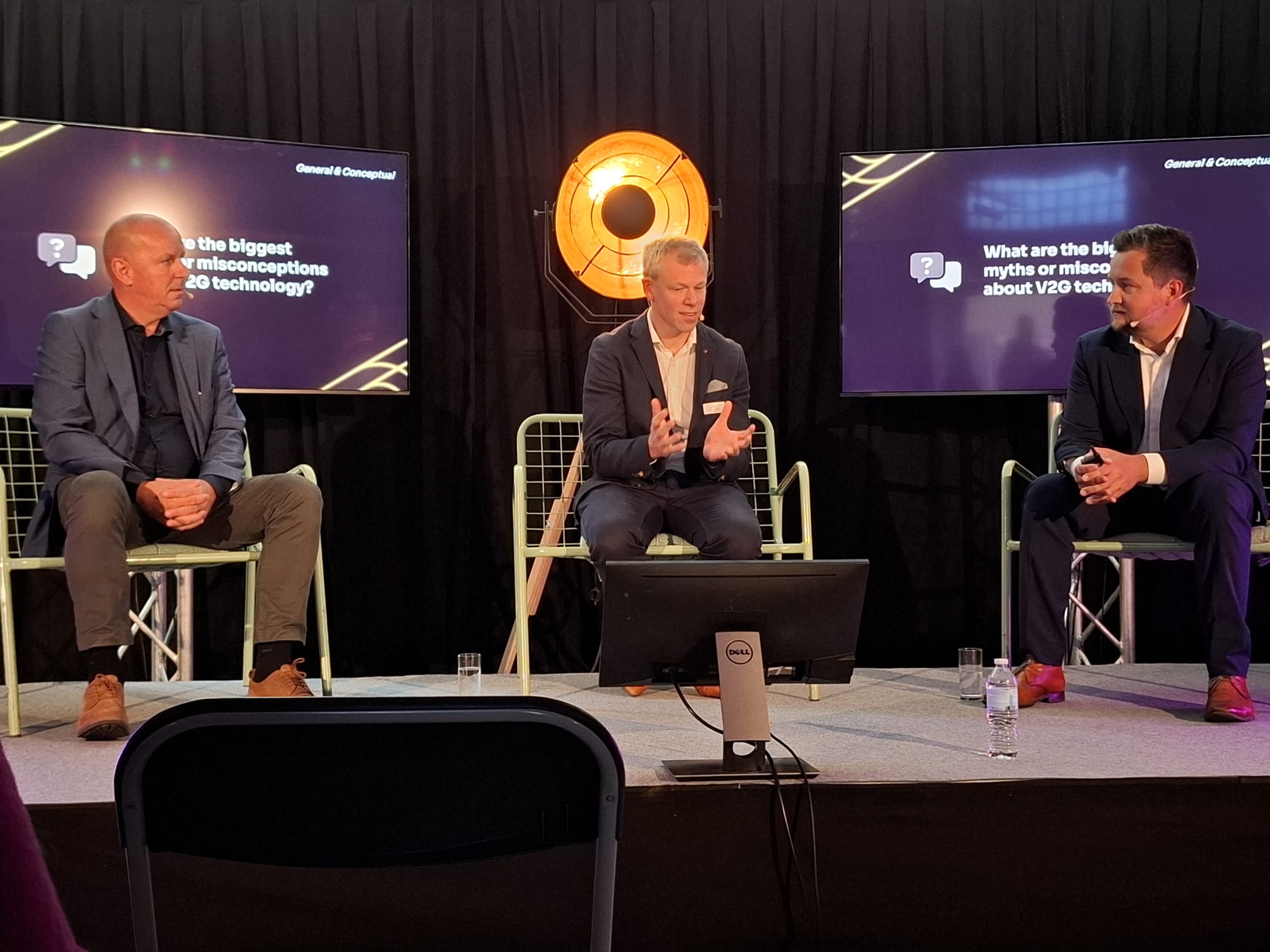V2G is on everyone’s lips — from fleet managers to facility operators and HR leaders. Every time a company installs home charging points for employees, the same question arises:
“Should we already plan for Vehicle-to-Grid?”
The short answer? Yes, but not yet.
Let’s explore why — from technical readiness to regulatory barriers and business implications — and how companies can start preparing today.
What Is Vehicle-to-Grid (V2G)?
Vehicle-to-Grid refers to the ability of electric vehicles to not only draw energy from the grid to charge their batteries but also to send it back when needed.
With V2G, EVs become mobile batteries — providing flexibility to the energy system by:
- absorbing electricity when it’s abundant (e.g. sunny, windy hours),
- and releasing it when demand is high.
This creates a win-win:
- for the grid: balancing supply and demand,
- for users: potential financial gains,
- and for companies: smarter energy use and decarbonization.
Where Does Belgium Stand Today?
During Mbrella Crossroads, a key event for sustainable mobility actors, we had the pleasure to exchange with Philippe Vangeel (EV Belgium) and Nick Boels (Mbrella) on this very topic.
Here’s what emerged from the discussion — and what’s confirmed by Elia’s latest Adequacy and Flexibility Study (2026–2036):
1. Technically, V2G is Ready
- V2G-compatible chargers already exist and are commercially available.
- Vehicles such as the Nissan Leaf or Kia EV6 are already bidirectional-capable.
- Elia estimates an 80% round-trip efficiency, making it a viable flexibility source.
2. But Belgian Regulation Isn’t
- Most chargers haven’t yet passed RGIE conformity tests (mandatory for installation).
- Without certification, deployment remains blocked — even if hardware is ready.
3. The Operating Model Is Still Being Defined
Should EVs:
- react to price signals (market-based flexibility), or
- respond to building-level energy flows (local optimization)?
Both approaches have merits. But as Elia warns, price-based mass reactions could create physical “on/off” effects on the grid if thousands of vehicles switch simultaneously — a challenge for system stability.
4. The HR & Fiscal Framework Is Missing
Belgium’s tax and HR rules aren’t designed for bidirectional flows:
- Using employer-paid electricity at home to discharge back could be considered a benefit in kind.
- This raises questions about car policies, reimbursement, and advantage valuation.
What Does Elia’s Study Tell Us?
According to Elia, V2G and other forms of end-user flexibility could deliver:
- up to €350–500 million per year in system-wide savings by 2036,
- reduce Belgium’s adequacy gap by up to 800 MW in high-flexibility scenarios,
- and involve hundreds of thousands of vehicles contributing to balancing markets.
Yet, to unlock this potential, three conditions are crucial:
- Regulatory clarity (market access, RGIE conformity, fiscal framework),
- Technical enablers (smart meters, submetering, compliant chargers),
- Engagement of fleet operators and employers.
What Should Companies Do Today?
Even if full V2G isn’t operational yet, companies can already:
- Plan infrastructure accordingly: install V2G-ready chargers (hardware upgradable).
- Design flexible car policies: integrate clauses anticipating bidirectional charging.
- Collect data now: via smart charging (V1) to prepare for future optimization.
- Work with advisors (like Next Mobility) to assess HR, fiscal and operational impacts.
Why It Matters for Corporate Mobility
In Belgium, 83% of new EVs are company cars (Elia, 2024).
That means employers are the key enablers of V2G adoption.
Their choices — from charging strategy to reimbursement models — will determine whether V2G becomes a real asset or a missed opportunity.
Looking Ahead
V2G is more than a technology — it’s a paradigm shift.
It blurs the lines between mobility, energy, and HR.
At Next Mobility, we’re closely following these developments and actively working on:
- how to integrate V2G into car policies and operational processes,
- how to anticipate fiscal and HR implications,
- and how to align energy and mobility strategies for future readiness.
Because when V2G becomes available, being prepared will make all the difference.
